Landing System
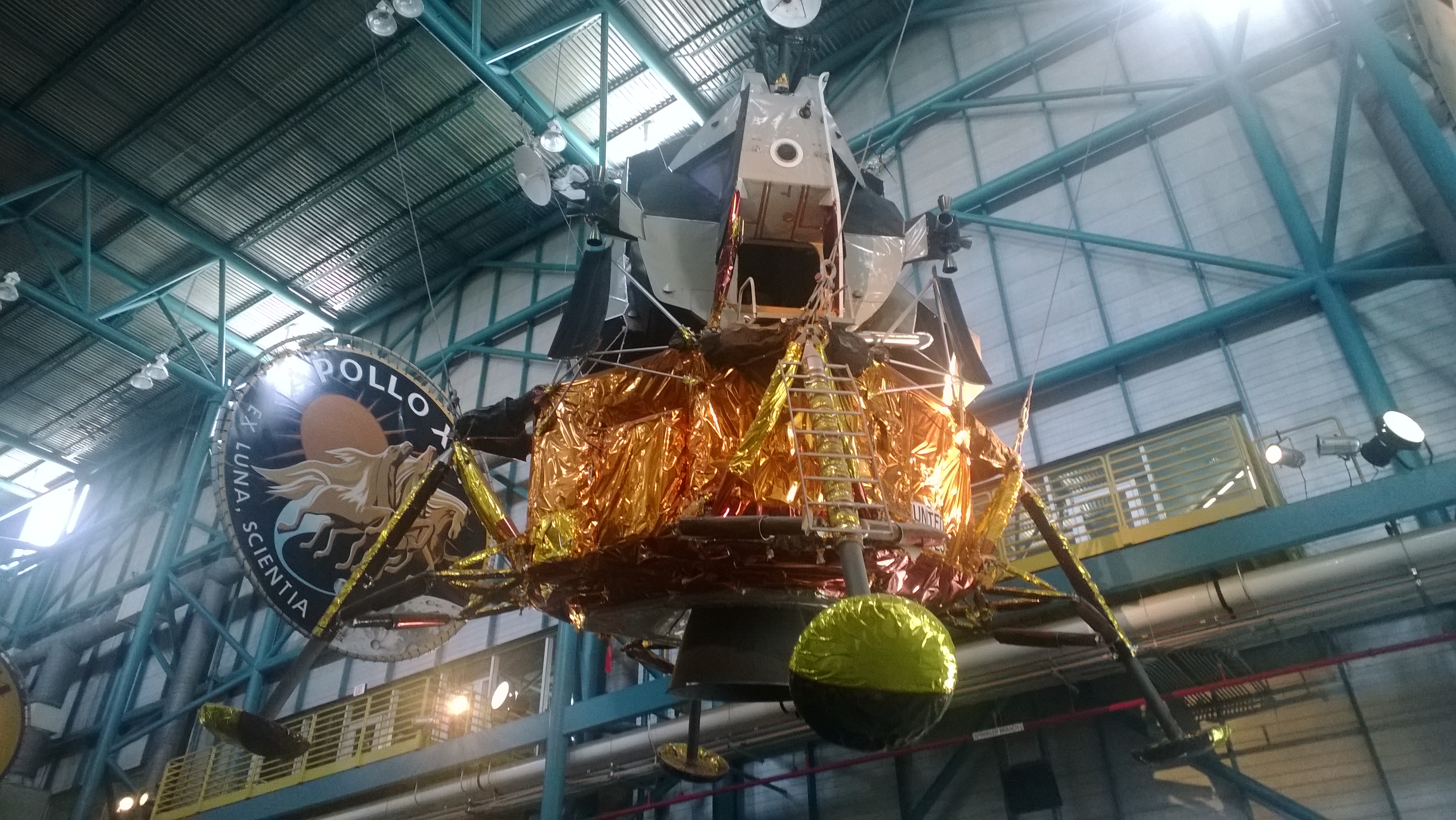
NASA Apollo Lunar Module at Kennedy Space Center Visitor Complex
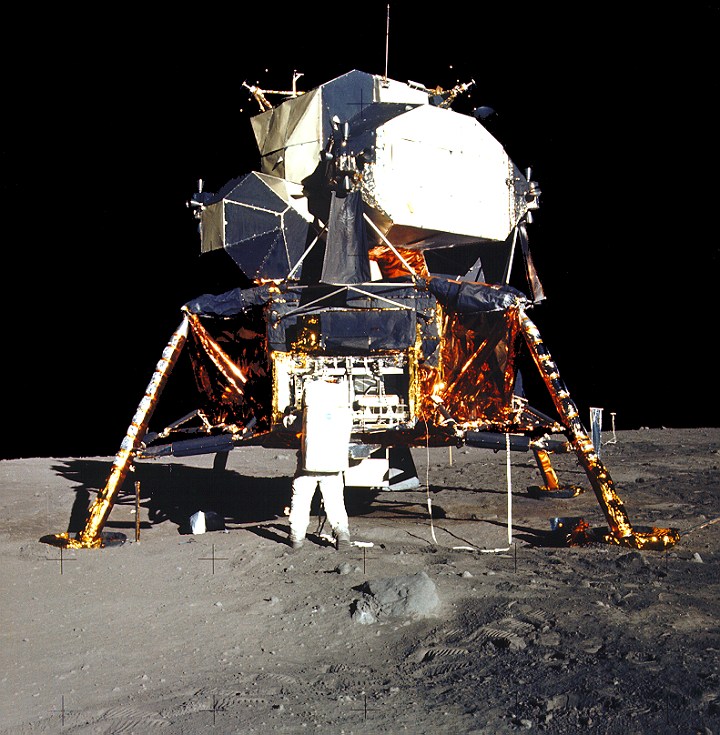
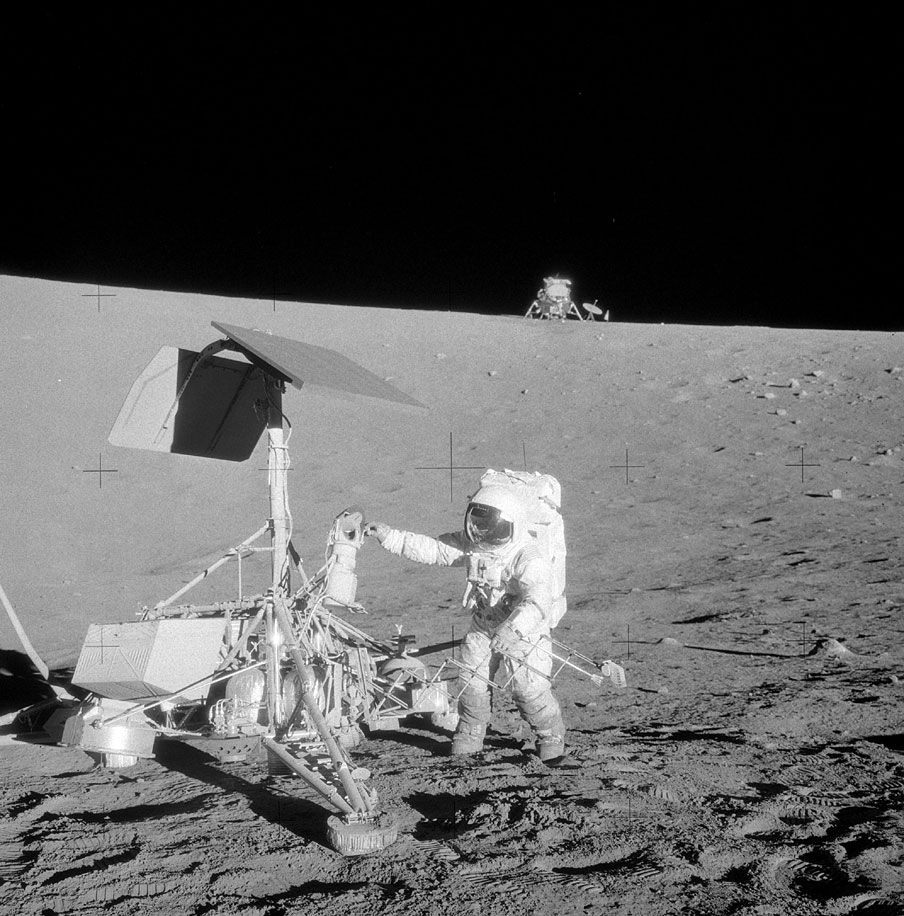
NASA Apollo 11 and Surveyor 3 (with Apollo 12 in background) on the Moon
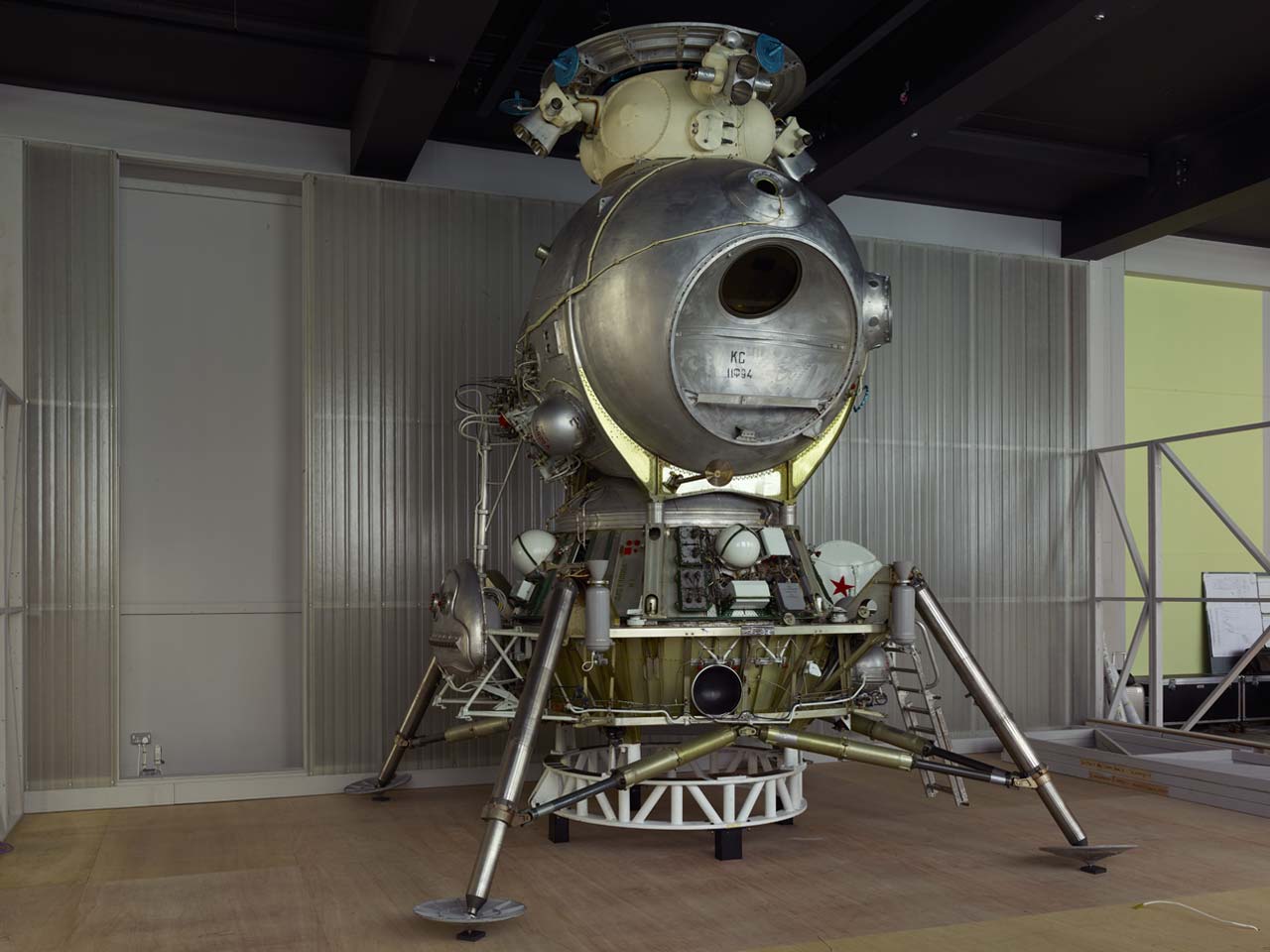
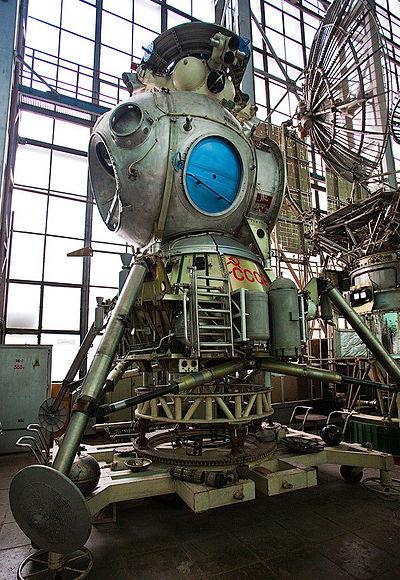
"Lunniy Korabl", LK
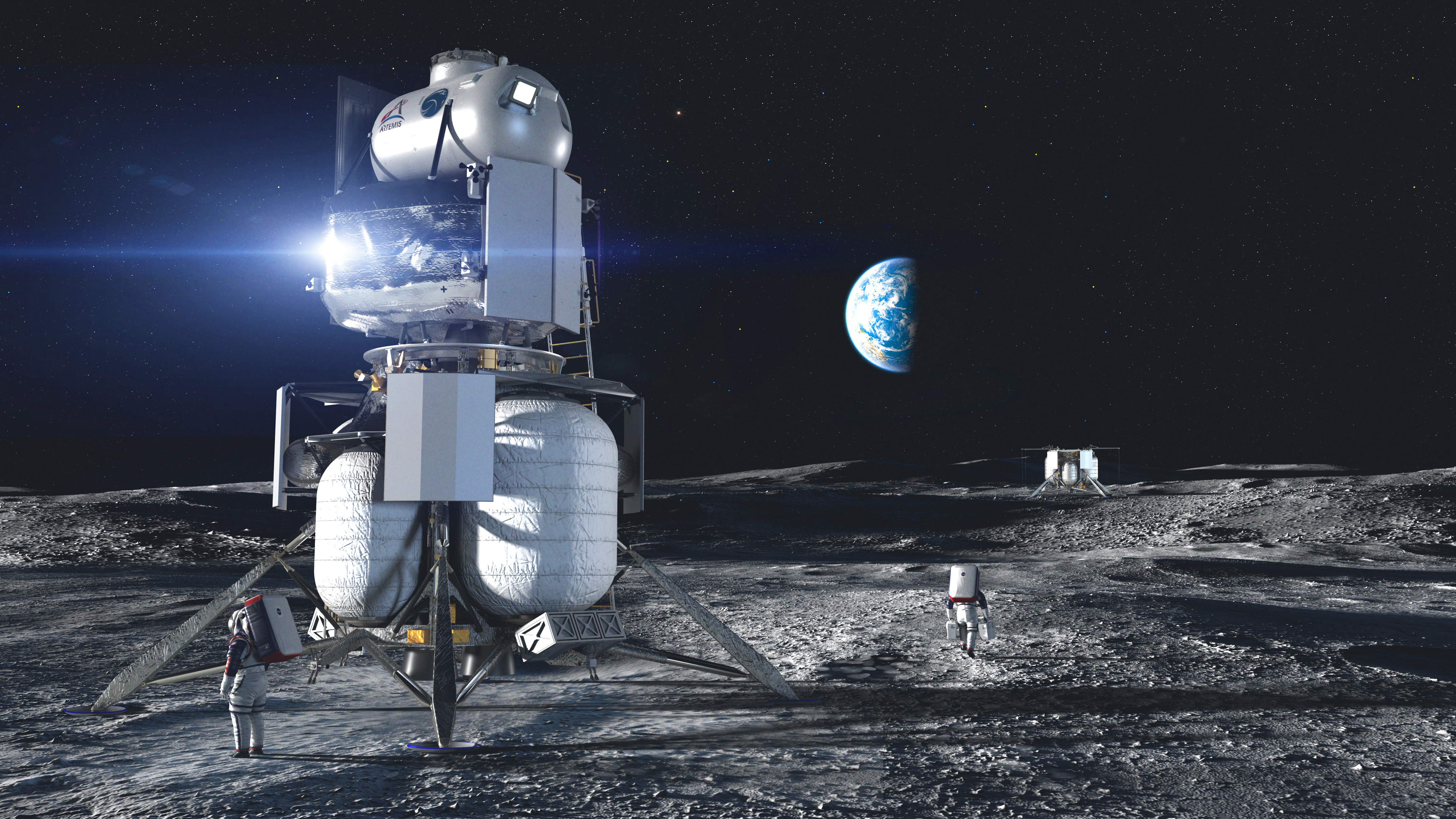
human Lunar lander proposal from Blue Origin
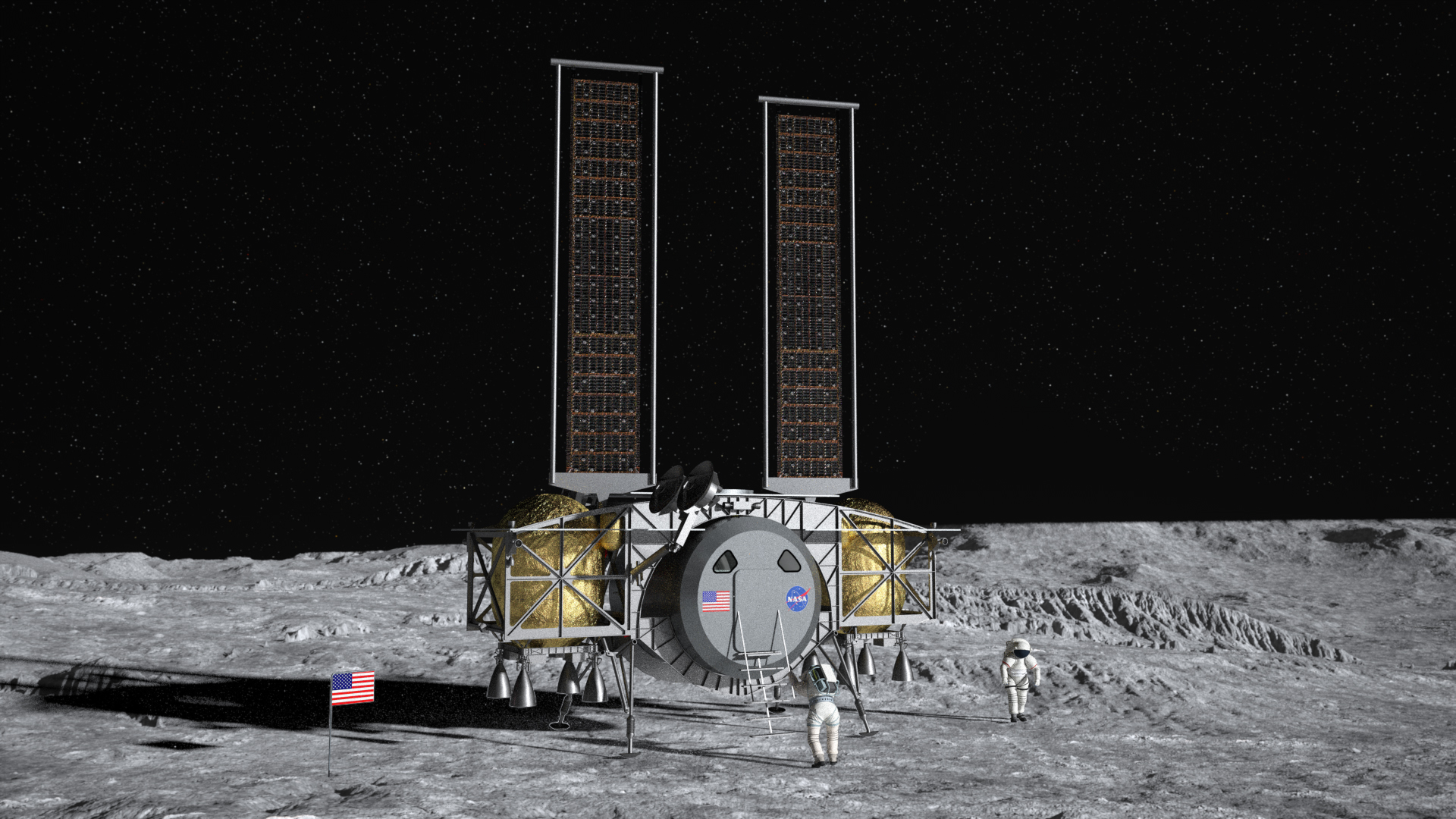
human Lunar lander proposal from Dynetics
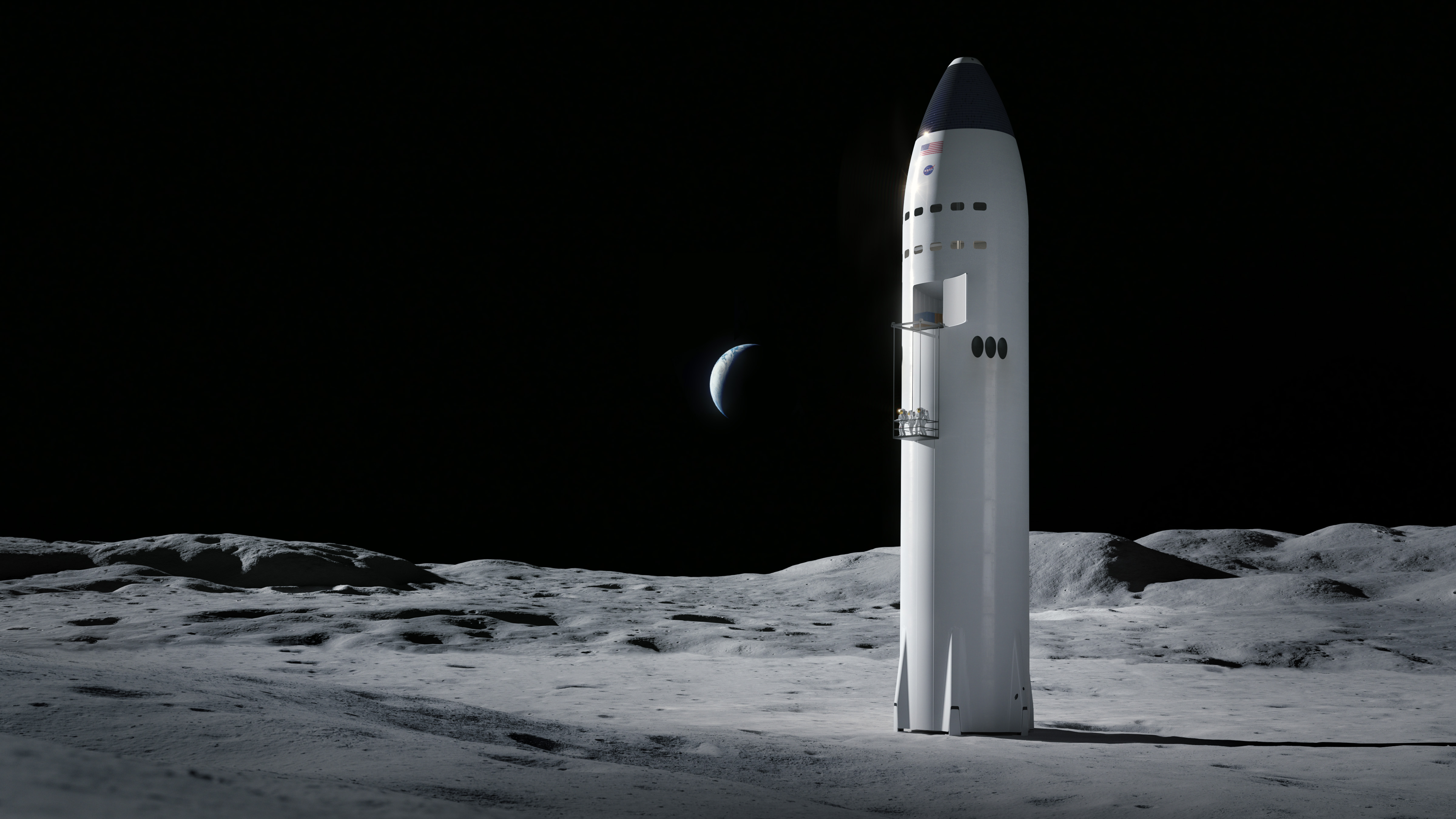
human Lunar lander proposal from SpaceX
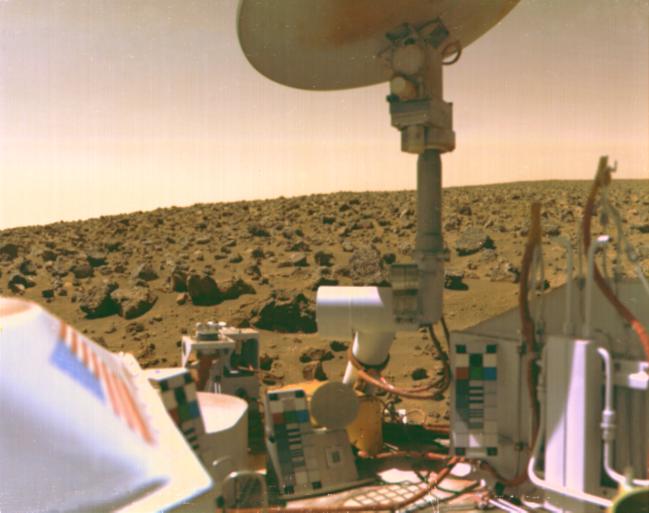
NASA Viking lander on Mars

Photo taken by the Yutu-2 rover on Jan 11, 2019 shows the Chang'e-4 lander. The Yutu-2 rover and the Chang'e-4 lander took photos of each other. [Photo/Xinhua/China National Space Administration]
A landing system is a system that allows a spacecraft to reach the surface of a celestial body such as the Moon, Mars, an asteroid (such as Ceres) or the Earth. For the US Apollo program to the Moon the Lunar landing system was the Apollo Lunar Module. A total of six Apollo Lunar Modules landed on the Moon, and two others went to the Moon. For the USSR N1/L3 program to the Moon the Lunar landing system was to be the lunar lander or ("Lunniy Korabl", LK). The LK had a weight of about 5.5 tons and could carry only one cosmonaut to the surface of the Moon, unlike the Apollo Lunar Module which carried two astronauts. The LK was tested in Earth orbit, running through the various burns it would need to complete a Moon mission; however, it never went to the Moon.
The Apollo Lunar Module included both a descent stage for landing and an ascent stage for returning the astronauts to the Apollo Command Module in Lunar orbit. The descent stage and the ascent stage each had their own liquid fueled rocket engine. While the LK had landing gear that would remain on the Moon, it was designed to use the same engine for both descent to the Moon and ascent from the Moon.
NASA is making plans to return to the Moon. In 2020 NASA announced that three companies would develop concepts for future human rated landers that would land astronauts on the Moon. The NASA contracts for human rated landers went to Blue Origin, Dynetics, and SpaceX. NASA later contracted SpaceX to demonstrate an initial human landing system for the Artemis III mission. Under that contract, the agency also directed SpaceX to evolve its design to meet the agency’s requirements for sustainable exploration and to demonstrate the lander on Artemis IV. After that, NASA further selected Blue Origin to develop a human landing system for the agency’s Artemis V mission to the Moon, Blue Origin will design, develop, test, and verify its Blue Moon lander to meet NASA’s human landing system requirements for recurring astronaut expeditions to the lunar surface. In addition to design and development work, the contract includes one uncrewed demonstration mission to the lunar surface before a crewed demo on the Artemis V mission.
In addition to Apollo and other human rated Moon landers, autonomous landers have also landed on the Moon and on Mars. These include US Surveyor, USSR Luna, US Viking, US Mars Pathfinder, China's Chang'e and others. Earlier landers mostly relied on rocket engines to slow their descent to the surface. Spacecraft that are able to leverage the atmosphere of a planet by using parachutes can reduce the mass of rocket fuel they need. This allows a larger ratio of payload mass to fuel mass for these spacecraft. For example, the 292 kg Surveyor 3 landed on the Moon using almost 700 kg of fuel. In comparison, the 899 kg Curiosity rover landed on Mars using only 390 kg of fuel. This doesn't factor in the mass of the parachute and heat shield. However, while parachutes are helpful on Mars, since the Moon doesn't have an atmosphere they are useless on Moon landings. The lack of an atmosphere does remove the need for a Moon lander to have a heat shield or any other aerodynamic shape. While the Apollo and many other landers used liquid propellant rocket engines, the Surveyor lander used both solid propellant and liquid propellant rocket engines, and the proposed OMOTENASHI CubeSat mission would use a solid propellant rocket engine. Landers on Mars have also incorporated parachutes since, unlike the Moon, Mars has a thin atmosphere. Spacecraft landing on Mars have incorporated air bags to cushion the landing.


Luna E-6 and E-6M Moon lander (aka Luna 9 and Luna 13)
Before using air bags to land on Mars, a similar technique was used to land on the Moon by the Luna 9 and 13 spacecraft. Airbags allow landers to bounce several times before coming to rest. The latest approach to landing the heavier Curiosity and Perseverance Rovers on Mars does not use air bags because airbags aren't effective for landing more massive spacecraft on more massive planets. However, the OMOTENASHI CubeSat mission is also proposing to use an air bag to land a small lander on the Moon. Airbags can simplify the design for the final stage of landing, but they need to be used in combination with other mechanisms to slow the spacecraft down for a landing. Also, the lander must be able to deal with the possibility that it is on its side or even upside down when it comes to rest.
| Landing Spacecraft | mission type | country of development | payload to surface (kg) | techniques | guidance control system technology |
|---|---|---|---|---|---|
| Luna 9, 13 (aka Luna E-6 and E-6M) | Lunar lander | USSR | 99 | retro rockets, air bags | |
| Surveyor 1, 3, 5, 6, 7 | Lunar lander | USA | 292 to 305.7 | retro rockets | |
| Apollo 11, 12, 14 | Lunar orbiter and lander and sample return | USA | 15,200- | retro rockets | Apollo Guidance Computer (AGC architecture) |
| Luna 16, 20, 23, 24 | Lunar lander and sample return | USSR | 1,880 | retro rockets | |
| Luna 17, 21 / Lunokhod 1, 2 | Lunar lander and rover | USSR | 1,514 | retro rockets | |
| Apollo 15, 16, 17 / with Lunar Rover | Lunar orbiter and lander and rover and sample return | USA | 16,400- | retro rockets | Apollo Guidance Computer (AGC architecture) |
| Viking 1, 2 | Mars orbiter and lander | USA | 572 | parachute, retro rockets | Guidance Control and Sequencing Computer (GCSC) consisting of two Honeywell HDC 402 |
| Mars Pathfinder / Sojourner | Mars lander and rover | USA | 264 | parachute, retro rockets, air bags | IBM RAD6000 (POWER architecture) on Pathfinder lander and an Intel 80C85 (8080 architecture) on Sojourner rover |
| MER-A, B / Spirit, Opportunity | Mars lander and rover | USA | 533 | parachute, retro rockets, air bags | IBM RAD6000 (POWER architecture) |
| Phoenix | Mars lander | USA | 350 | parachute, retro rockets | IBM RAD6000 (POWER architecture) |
| MSL Curiosity | Mars rover | USA | 899 | parachute, retro rockets | RAD750 (POWER architecture) |
| Chang'e 3, 4 / Yutu-1, 2 | Lunar lander and rover | China | 1,200 | retro rockets | |
| InSight | Mars lander | USA | 358 | parachute, retro rockets | two RAD750 (POWER architecture) |
| Chang'e 5 | Lunar lander and sample return | China | retro rockets | ||
| Perseverance | Mars rover | USA | 1025 | parachute, retro rockets | RAD750 (POWER architecture) |
| Tianwen-1 / Zhurong | Mars rover | China | 240 | parachute, retro rockets | |
| Chandrayaan-3 / Vikram / Pragyan | Lunar orbiter and lander and rover | India | 1752 | retro rockets | |
| SLIM / LEV-1 and LEV-2 | Lunar orbiter and lander and rover | Japan | 590 | retro rockets | PowerPC405 (POWER architecture) |
| Nova-C Odysseus IM-1 | Lunar orbiter then lander | USA | <1900 | retro rockets |
Gallery of Landers that support Rovers





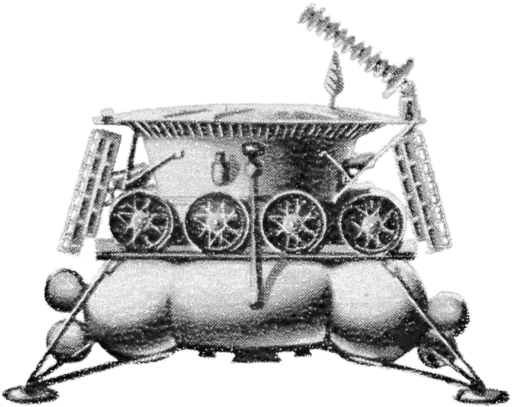




In addition to spacecraft that have landed on the Moon and Mars, spacecraft also land on Earth. Early space capsules returning to Earth also relied heavily on parachutes to decrease their velocity. While the Space Shuttle relied on wings to generate aerodynamic forces to slow its velocity, the most recent approach to landing large spacecraft on Earth rely on rocket engines. Both Blue Origin and SpaceX have developed rockets that can go to space and then land back on Earth. This is interesting since similar technology could be applied to landing on Mars and the Moon, while wings and parachutes don't work well on Mars or at all on the Moon. Note that the SpaceX human Lunar lander proposal looks like their Falcon rockets that they land on Earth.
In addition to the forms of navigation used by spacecraft, landers typically also use RADAR to detect the distance to the planets surface or a Doppler RADAR to detect distance and velocity relative to the surface. By knowing the distance to the surface and the velocity relative to the surface of the planet, a guidance control system can determine when to deploy mechanisms to slow the landers decent.
The Apollo Lunar Module was powered by batteries. It had an Apollo Guidance Computer (AGC) for guidance and control which the two astronauts could run programs on to conduct various maneuvers. Most landers have used electric batteries. The Apollo Lunar Module used silver oxide zinc batteries. The Viking Lander used nickel cadmium batteries along with a radioisotope thermoelectric generator.
Further Reading
Digital Apollo: Human and Machine in Spaceflight (MIT Press)
On Mars: Exploration of the Red Planet, 1958-1978--The NASA History (Dover Books on Astronomy)
Sojourner: An Insider's View of the Mars Pathfinder Mission by Andrew Mishkin (2003-12-02)
Roving Mars: Spirit, Opportunity, and the Exploration of the Red Planet
Working Example
For students who want to experiment with a working example, in addition to the Moon or Mars, you can test landing systems right here on Earth although you won't have the same issues that you would on the Moon. Before building anything it's a good idea to know what you're trying to accomplish. For example, if you want to build a lunar lander, are you building it to land a camera or scientific instrument, lunar rover, a sample return craft, a terrarium or greenhouse, humans? That will tell you something about how much mass you want to land on the Moon. You don't need an Apollo Lunar Module if you're only trying to land a small rover. Also, are you landing from lunar orbit or coming from Earth. This will tell you something about how fast you will be going as you approach the Moon.
The job of a lander is to change what would be an high energy impact into a low energy landing. During an impact, an object's kinetic energy is equal to one half of the object's mass times the square of its relative velocity: KE = m / 2 * v^2. To decrease the impact force of a lander, you need to decrease its kinetic energy before it reaches the surface and its kinetic energy is released all at once.
If your goal is to develop something that simulates landing on the Moon, you shouldn't rely on parachutes or wings. Since the Moon has no atmosphere to use to decrease the landers velocity through heat shields or parachutes, you will likely have to rely on rocket engines to decrease the velocity. These could be liquid fueled rocket engines or solid propellant rocket engines like what was used on NASA Surveyor landers. The amount of force the rocket engine will have to generate will depend on the mass and velocity the lander starts at. You probably shouldn't be experimenting with LOX and certainly not with UDMH nor dinitrogen tetroxide. However, you could use a solid propellant model rocket engine as a retro rocket.
Further you will have to aim those rocket engines in the direction that will decrease the velocity relative to the Moon. Radar is quite often used to determine at what altitude a lander is at and when and how much thrust should be generated by the rocket engines. Doppler radar is sometimes used to determine relative velocity with the ground and how much additional thrust is needed to decrease the velocity. Also keep in mind that the Moons surface is also moving as the Moon rotates. Sometimes cameras are used to take multiple images during final decent to determine if the lander is drifting relative to the surface features. Additionally gyroscopes and acelerometers might be used to track the landers change in position.
All of these navigation sensors need to feed back to the control system for smaller rocket thrusters that can adjust the direction and speed of the lander. This control system could be built from discrete electronics, but typically today they're built from small computer control systems.
Also, most landers don't land perfectly on the surface with zero kinetic energy. They quite often zero out their kinetic energy slightly above the surface and then drop. Compressible shock absorbers in their lander gear or air bag mechanisms like those used by Luna 9 and 13 (as well as Pathfinder, Spirit, and Opportunity on Mars) are used to absorb any remaining energy. You could create an air bag from balloons or plastic bags.
Finally, put all those rockets, sensors, landing gear, and control mechanisms into a rugged structure where everything can activate and deploy appropriately and somehow get a ride to the neighborhood of the Moon, or drop test on Earth. Have a look a OMOTENASHI for simulated videos of how the small OMOTENASHI lander is proposed to work.
Here are some more links to, although unsuccessful, an interesting lunar landing project:
- OMOTENASHI - Outstanding MOon exploration TEchnologies demonstrated by NAno Semi-Hard Impactor
- Trajectory Design for the JAXA Moon Nano-Lander OMOTENASHI
- The World's Smallest Moon Lander - OMOTENASHI
- OMOTENASHI
- OMOTENASHI - simulation videos
Text Copyright (C) 2017 - 2024 R. J. Kuhn. Please note that you are not allowed to reproduce or rehost this page without written permission.





